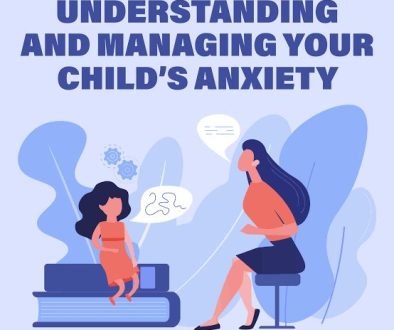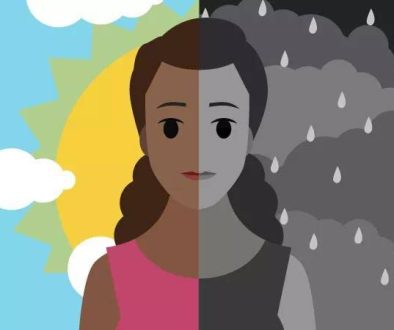Post-Traumatic Stress Disorder: Understanding the Impact and Path to Recovery
Post-Traumatic Stress Disorder (PTSD) is a complex mental health condition that can occur after an individual experiences or witnesses a traumatic event. While many people associate PTSD with military veterans, it can affect anyone, regardless of age, gender, or background. Understanding PTSD, its symptoms, risk factors, and treatment options is crucial for supporting those affected by this condition and promoting awareness.
Understanding PTSD
PTSD can develop after a variety of traumatic experiences, including combat exposure, natural disasters, sexual assault, serious accidents, and witnessing violent events. Not everyone who experiences trauma will develop PTSD; however, for some, the psychological impact of trauma can be overwhelming and long-lasting. The symptoms of PTSD typically fall into four categories:
1. Intrusive Memories: Individuals with PTSD often experience intrusive thoughts or memories related to the traumatic event. This may manifest as flashbacks, where the person feels as though they are reliving the trauma, or as distressing dreams about the event.
2. Avoidance: Those with PTSD may engage in avoidance behaviors, steering clear of places, people, or situations that remind them of the trauma. They may also avoid discussing the event or their feelings about it, leading to emotional numbing and isolation.
3. Negative Changes in Mood and Cognition: PTSD can lead to negative changes in thoughts and feelings. Individuals may experience persistent negative beliefs about themselves or others, feelings of guilt or shame, and a diminished interest in activities they once enjoyed. They may also struggle with emotional regulation, leading to irritability, anger outbursts, or difficulty concentrating.
4. Arousal and Reactivity Symptoms: These symptoms include heightened arousal, which may manifest as difficulty sleeping, hypervigilance, exaggerated startle responses, and difficulty concentrating. Individuals may feel constantly on edge, making it challenging to relax or engage in daily activities.
Risk Factors
Several factors can increase the likelihood of developing PTSD after a traumatic event. These include:
– Intensity of the Trauma: The severity of the traumatic experience is a significant factor. Those who experience more intense or prolonged trauma are at higher risk.
– Previous Trauma: Individuals with a history of trauma are more susceptible to PTSD. Previous experiences of abuse, violence, or neglect can impact a person’s resilience and coping mechanisms.
– Genetics: Research suggests that genetic factors may contribute to the development of PTSD. Some individuals may have a genetic predisposition that makes them more vulnerable to stress and trauma-related disorders.
– Lack of Support: Social support plays a crucial role in recovery from trauma. Individuals who lack a strong support network or face social isolation may be more likely to develop PTSD.
– Coping Styles: People who use maladaptive coping strategies, such as avoidance or substance abuse, may struggle more with PTSD symptoms. Healthy coping mechanisms are essential for processing trauma and mitigating its effects.
Treatment Options
Effective treatment for PTSD often involves a combination of therapeutic approaches, medication, and support systems. Some common treatment options include:
1. Psychotherapy: Various forms of therapy have been shown to be effective for PTSD. Cognitive-behavioral therapy (CBT) is a widely used approach that helps individuals identify and change negative thought patterns related to the trauma. Prolonged exposure therapy is another effective treatment that encourages individuals to confront their trauma in a safe environment, gradually reducing avoidance behaviors.
2. Eye Movement Desensitization and Reprocessing (EMDR): EMDR is a specialized therapy that helps individuals process traumatic memories by using guided eye movements. This technique aims to reduce the emotional charge associated with traumatic memories, making them easier to manage.
3. Medication: Antidepressants, particularly selective serotonin reuptake inhibitors (SSRIs), are commonly prescribed to help manage PTSD symptoms. Medication can alleviate symptoms of anxiety and depression, making it easier for individuals to engage in therapy and cope with daily challenges.
4. Support Groups: Participating in support groups can provide individuals with a sense of community and understanding. Sharing experiences with others who have faced similar challenges can help reduce feelings of isolation and stigma.
5. Lifestyle Changes: Incorporating healthy lifestyle changes, such as regular exercise, a balanced diet, and mindfulness practices, can support mental well-being. Activities like yoga and meditation can help reduce anxiety and improve emotional regulation.
The Importance of Support Systems
Recovering from PTSD can be a long and challenging journey. Having a strong support system is vital for individuals dealing with this condition. Family and friends can play a crucial role in providing emotional support, understanding, and encouragement throughout the healing process. Educating loved ones about PTSD can also foster a more supportive environment, helping them understand the challenges the individual may face.
Additionally, professionals working with individuals with PTSD should approach treatment with empathy and understanding. Recognizing the unique experiences and challenges faced by those with PTSD can help create a safe space for healing.
In conclusion
Post-Traumatic Stress Disorder is a complex condition that can significantly impact an individual’s life. Understanding the symptoms, risk factors, and available treatment options is essential for fostering awareness and support for those affected by PTSD. With the right resources, therapy, and a strong support system, individuals can find a path to recovery and reclaim their lives after trauma. Ongoing advocacy for mental health awareness is vital in reducing stigma and promoting understanding, ensuring that those with PTSD receive the care and compassion they deserve.



